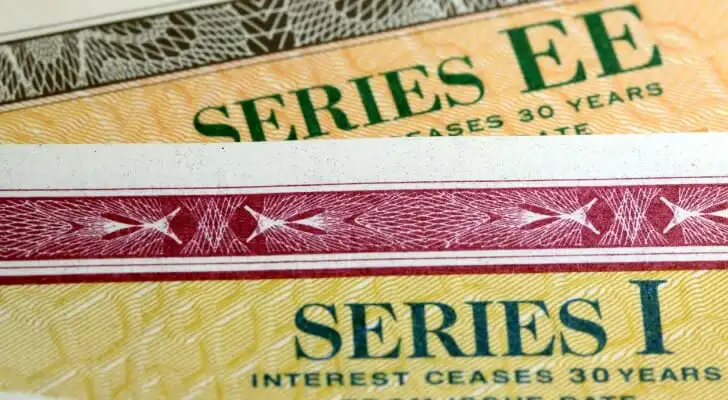When people think of their ideal nest egg, many aim for – or hope for – $1 million. They want a sufficient cushion to carry them and any loved ones through their golden years. However, that may not be enough to cover someone’s retirement lifestyle. On the other hand, with $5 million, you have a genuine pathway to financial freedom, and when invested wisely it can last you your lifetime. But not all investments are alike. So, if you’re wondering how much interest, as opposed to capital appreciation, will I earn on $5 million, here are some of your options. Also, consider working with a financial advisor as you explore ways to build an income-generating portfolio.
What Securities Can Provide Reliable Interest?
There are several choices for people who want to park a large sum of money into super-safe financial products that provide a reliable source of interest. Just keep in mind that, over the long haul, the amount you can get off these kinds of securities is often less than can be had from other types of financial products, such as equities, currencies and alternative investments.
Of course, these come with varying degrees of greater risk, which may not be acceptable to someone hoping to park their money somewhere safe and secure. Another caution: The following financial products should not be expected to beat or necessarily even keep up with inflation.
Earning Interest From Savings Accounts
Savings accounts are a reliable and safe option for storing away funds. They’re also the most basic type of savings vehicle and available at almost any financial institution. Most use them for short-term goals since they don’t accrue much interest. But you can protect the account through the Federal Deposit Insurance Corporation (FDIC), making it perfect for emergency funds.
According to the FDIC, the national average rate for savings accounts as of October 2024, was 0.45%. So, if you made a $5 million deposit, it would generate approximately $22,500 of interest in a year according to SmartAsset’s savings calculator.
But this low interest rate makes them ill-suited for long-term goals. It certainly doesn’t keep up with the rate of inflation, so you end up losing money in the end.
Earning Interest From Certificates of Deposit (CDs)
Like savings accounts, certificate deposits (CD) are a low-risk place to stash your cash. They’re offered through banks or credit unions and advertised based on their yield, term and compounding frequency. When comparison shopping for CD, it’s important to pay attention to the APY (annual percentage yield) and its compounding schedule. The faster interest compounds, the more you earn.
Usually, a long-term CD pays a higher interest rate than one with a short-term, but some create CD ladders as an alternative. They plan out multiple CD purchases to benefit from when they hit maturity. That also ensures more frequent compounding and a regular income stream.
As of October 2024, the national average rate for a 1-month CD was 0.23% but the average increases with the term. So, if you made a $5 million deposit, it would generate approximately $11,512 of interest in a year. However, a 60-month CD had a rate of 1.37%. That would generate approximately $68,931 of interest in a year.
While CDs offer the chance of higher returns than a savings account, they’re still at a low rate of return and don’t keep up with inflation. They also come with significant early withdrawal penalties
Earning Interest From Treasury Savings Bonds
 Treasury bonds, or T-bonds, are similar to a loan, except you’re the lender and the government is the borrower. So, when you buy one, the government guarantees to pay you back plus interest. This option often works well for beginning investors since they’re a simple, low-cost and low-risk choice.
Treasury bonds, or T-bonds, are similar to a loan, except you’re the lender and the government is the borrower. So, when you buy one, the government guarantees to pay you back plus interest. This option often works well for beginning investors since they’re a simple, low-cost and low-risk choice.
They come in two versions, Series EE and Series I. The former carries a fixed rate, and although they have an expiration date, they’re guaranteed to double in value over the course of 20 years. The latter are newer and come with both a fixed rate as well as a variable one to keep up with inflation.
Series EE bonds pay interest until you cash them or they reach maturity at 30 years. They (and Series I) require a minimum purchase of $25 with a maximum of $10,000 per calendar year. Any Series EE issued between May 2024 and October 2024 comes at a rate of 2.70%. In contrast, Series I bonds issued between May 2024 and October 2024 come with a rate of 4.28%. The most you can put in a Series I bond is $15,000.
Of course, with the lower risk of these bonds comes lower returns. You might not make as much as you would if you invested in something like dividend-paying stocks. Plus, the fixed rate on the Series EE can put you at a disadvantage against inflation.
Earning Interest From Money Market Accounts
Money market accounts work similarly to a savings account. You can deposit and withdraw funds into a money market account as you see fit, but you’re usually limited to six transfers per month in accordance with Regulation D. As noted earlier, this limit does not include ATM withdrawals or withdrawals you make in person. Money market accounts often come with required minimum balances. If you make more withdrawals than allowed or don’t maintain your required minimum balance, banks will often charge a fee.
Money market accounts are also extremely safe. Money market accounts from a bank are backed by the Federal Deposit Insurance Company (FDIC) for up to $250,000 per account and those from credit unions are backed by the National Credit Union Administration (NCUA). That means your principal balance is covered against loss if something goes wrong with your bank, credit union or financial institution. Some accounts could be insured for even higher amounts if they’re linked to property investments.
If a money market account generated interest at a rate of 0.5% a $5,000,000 account (or set of accounts totaling that amount) would generate a one-year return of $25,000.
Earning Interest From Money Market Funds
A money market fund is essentially a mutual fund, rather than a deposit account, and it is not FDIC-insured or NCUA-insured. However, it typically pays a higher interest rate than a money market account and it is normally extremely safe. They come in taxable and tax-exempt forms. You can invest in money market funds through an online brokerage, either inside a tax-advantaged savings account like an IRA or through a taxable account.
Money market funds also carry different fees compared to money market accounts. Instead of paying a monthly maintenance fee, for example, you’d pay an expense ratio instead. This expense ratio reflects the cost of owning a money market fund annually, expressed as a percentage. Generally, you want a fund with a lower expense ratio, since fees detract from your investment earnings.
If a money market fund generated interest at a rate of 4% a $5,000,000 account would generate a one-year return of 200,000.
Can You Retire on $5 Million?
The true answer is that it depends on your lifestyle and spending habits, as well as how much you can earn on that $5 million. However, retiring on $5 million is highly achievable for most people, assuming reasonable spending habits and smart financial planning. A common rule of thumb is the 4% withdrawal rule, meaning you could withdraw $200,000 per year (4% of $5 million) without depleting the principal for at least 30 years. This provides a comfortable annual income, especially if you are debt-free and avoid high-cost lifestyles.
However, individual circumstances matter. Factors like your age at retirement, health care expenses, inflation, and lifestyle choices will impact how long $5 million lasts. Retiring earlier (in your 50s or younger) means more years to fund, so you may need a more conservative strategy, such as a 3.5% withdrawal rate. Additionally, unexpected costs, such as long-term care, could reduce the nest egg faster than anticipated.
If well-invested, the $5 million can continue to grow, particularly if a portion remains in equities or income-generating assets. With proper planning—adjusting for taxes, keeping living expenses reasonable, and considering Social Security benefits (if applicable)—you can comfortably retire on $5 million and sustain a high standard of living for decades.
Bottom Line
 People with a big nest egg and a very low-risk tolerance can safely tuck their money away in savings accounts, CDs, Treasury instruments, money market accounts and money market funds. Of course, interest is available from other types of securities, like stocks and real estate investment trusts (REITs). But those are more risky than the financial products described above, and investors often buy stocks and REITs for capital appreciation rather than just the regular payments because those payments can’t be guaranteed.
People with a big nest egg and a very low-risk tolerance can safely tuck their money away in savings accounts, CDs, Treasury instruments, money market accounts and money market funds. Of course, interest is available from other types of securities, like stocks and real estate investment trusts (REITs). But those are more risky than the financial products described above, and investors often buy stocks and REITs for capital appreciation rather than just the regular payments because those payments can’t be guaranteed.
Using a Financial Advisor to Help You Invest
- Funds for retirement can disappear if you’re not careful. Even if you save enough, careless spending or a lack of strategy puts it at risk. That’s why it’s better to create a plan and have a financial advisor help you do that. Finding a financial advisor doesn’t have to be hard. SmartAsset’s free tool matches you with up to three vetted financial advisors who serve your area, and you can have a free introductory call with your advisor matches to decide which one you feel is right for you. If you’re ready to find an advisor who can help you achieve your financial goals, get started now.
- Investing requires a strategy. Putting your money in conservative vehicles like CDs and savings bonds protects it thanks to the low risk. But that might not be the right move if it doesn’t fit with your long-term financial needs. A financial advisor with a certified financial planner (CFP) certification can help you improve your plan. They’re experienced with things like tax and retirement planning, meaning they can work with you to shape your investments toward your goals.
Photo credit: ©iStock.com/MarsBars, ©iStock.com/larryhw, ©iStock.com/malerapaso
